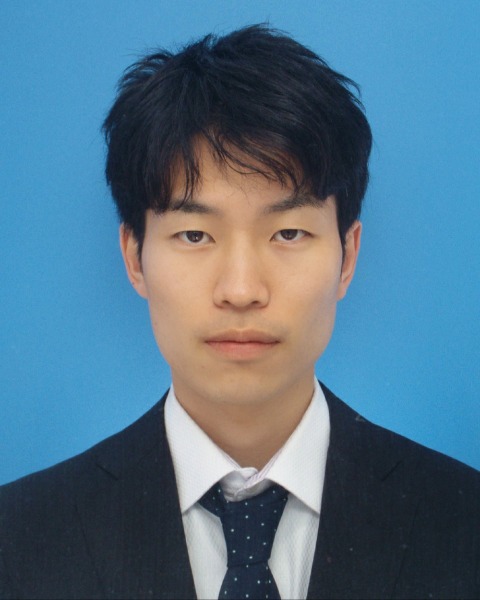Embryo/Fetus
Poster Session C
(P-064) Pronuclear migration in zygotes with sperm centrosome is regulated by microtubules oriented from centrosomes
Friday, July 19, 2024
8:00 AM - 9:45 AM IST
Room: The Forum

Yuki Takada, PhD (he/him/his)
Postdoctoral fellow
Reproductive Science, Osaka Metropolitan University, Graduate School of Medicine
Osaka, Japan
Poster Presenter(s)
Abstract Authors: Yuki Takada1; Shu Hashimoto1; Yoshiharu Morimoto2
1. Reproductive Science, Osaka Metropolitan University, Graduate School of Medicine, Osaka, Japan
2. HORAC Grand Front Osaka Clinic, Osaka, Japan
Abstract Text: After sperm penetration, parental pronuclei come close to each other and form mitotic spindle. In mouse zygotes without centrosomes, the pronuclear migration requires both of actin and microtubule cytoskeletons. However, the cytoskeletons responsible for pronuclear migration and the roles of centrosomes in non-rodent mammalian zygotes with centrosomes are not fully understood.
To address this, we investigated pronuclear migration in bovine zygotes by live-cell imaging and immunofluorescence. Depolymerization of actin cytoskeleton by cytochalasin B treatment had no effects on the pronuclear migration, whereas depolymerization of microtubule cytoskeletons by nocodazole treatment significantly inhibited the pronuclear migration. Immunofluorescence analyses revealed that the centrosomes derived from a sperm accumulated gamma-tubulin, protein that is required for microtubule nucleation, and organized cytoplasmic microtubule network in zygote. In addition, the microtubule motor, cytoplasmic dynein accumulated to the both membranes of parental pronuclei and localized to the sides where the pronuclei face each other. Depolymerization of microtubules caused diffusion of dynein on the pronuclear membranes. On the other hand, removal of nocodazole caused re-elongation of microtubules from centrosomes toward pronuclei and re-localization of dynein on the pronuclear interface. When centrosomes were not located between the parental pronuclei in zygotes, the two pronuclei did not appose.
Our results indicate that the pronuclear migration in mammalian zygotes with centrosomes mainly depends on the microtubules nucleated from centrosomes. The localization of dynein to the side of pronuclear interface on the pronuclear membrane was regulated by microtubules. Thus, it is predicted that the retrograde movement of dynein on the pronuclear membrane toward centrosomes along microtubules mediates pronuclear migration. The centrosome positioning is believed to be important for regulating the direction of pronuclear migration.
1. Reproductive Science, Osaka Metropolitan University, Graduate School of Medicine, Osaka, Japan
2. HORAC Grand Front Osaka Clinic, Osaka, Japan
Abstract Text: After sperm penetration, parental pronuclei come close to each other and form mitotic spindle. In mouse zygotes without centrosomes, the pronuclear migration requires both of actin and microtubule cytoskeletons. However, the cytoskeletons responsible for pronuclear migration and the roles of centrosomes in non-rodent mammalian zygotes with centrosomes are not fully understood.
To address this, we investigated pronuclear migration in bovine zygotes by live-cell imaging and immunofluorescence. Depolymerization of actin cytoskeleton by cytochalasin B treatment had no effects on the pronuclear migration, whereas depolymerization of microtubule cytoskeletons by nocodazole treatment significantly inhibited the pronuclear migration. Immunofluorescence analyses revealed that the centrosomes derived from a sperm accumulated gamma-tubulin, protein that is required for microtubule nucleation, and organized cytoplasmic microtubule network in zygote. In addition, the microtubule motor, cytoplasmic dynein accumulated to the both membranes of parental pronuclei and localized to the sides where the pronuclei face each other. Depolymerization of microtubules caused diffusion of dynein on the pronuclear membranes. On the other hand, removal of nocodazole caused re-elongation of microtubules from centrosomes toward pronuclei and re-localization of dynein on the pronuclear interface. When centrosomes were not located between the parental pronuclei in zygotes, the two pronuclei did not appose.
Our results indicate that the pronuclear migration in mammalian zygotes with centrosomes mainly depends on the microtubules nucleated from centrosomes. The localization of dynein to the side of pronuclear interface on the pronuclear membrane was regulated by microtubules. Thus, it is predicted that the retrograde movement of dynein on the pronuclear membrane toward centrosomes along microtubules mediates pronuclear migration. The centrosome positioning is believed to be important for regulating the direction of pronuclear migration.
